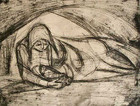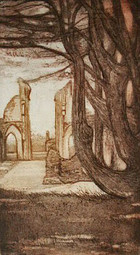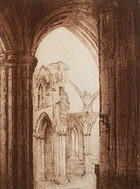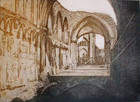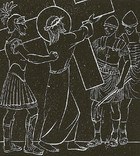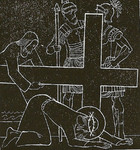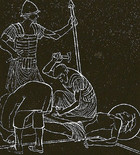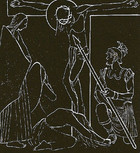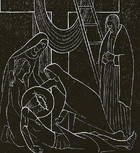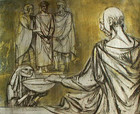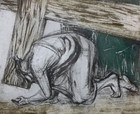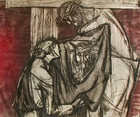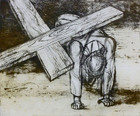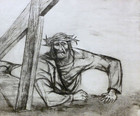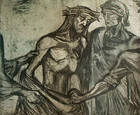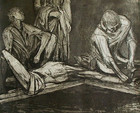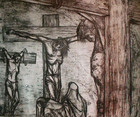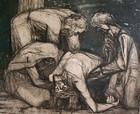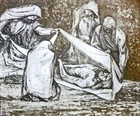Pat M. Allman-Smith
(1930-2008)
Good sacred art frequently comes out of a place of personal pain. English Printmaker Pat M. Allman-Smith (or Mallinson, as she was known later in her career) struggled during her formative years as an artist in the late 1940s and 1950s to placate a domineering, devoutly Roman Catholic mother who was not pleased with her daughter's choice of vocation.
Allman-Smith found work teaching at the Farnborough Hill Roman Catholic girls’ school in Hampshire, where she had once been a student, and dutifully devoted herself to religious art in an effort to please her mother. She produced images of doleful Madonnas and Stations of the Cross series that never found an audience.
The artist married Kenneth Mallinson in 1958 and stopped making art for a time to raise a family of four. Once her two sons and two daughters were in school, she took up printmaking again in the mid-1970s--this time under her married name with an artistic vision freed from the restraints of her early years.
Working from drawings in the sketchbooks that were her constant companions, Mallinson celebrated the joys of music-making with her children, the natural beauty of the English countryside, and journeys to Africa, India, and China in etchings made on an old hand printing press in the basement of her home near Hampstead Heath.
The only religious subjects to appear under the Mallinson signature are ruined abbeys. When her mother died, she left the church for good.
Even if Pat M. Mallinson wanted to distance herself from the art of Pat M. Allman-Smith, her early pieces on sacred themes like the two series of Stations of the Cross prints in my collection have an undeniable expressive power, which must have come out of her struggle with the demands of faith and family.
The bleak dignity of the small format, white-line wood engravings of the first Stations of the Cross series brings to mind the spare graphic style of British printmaker and typographer, Eric Gill. How very different in mood is the second chiaroscuro aquatint series, dating from 1950, whose agitated, spidery line work suggests the Crucifixion imagery of French Modernist Bernard Buffet!
The body of Christ bent under his dread burden is so twisted and contorted in this second set of prints that we cannot help but wince at the palpable pain and suffering. They bear poignant witness to Allman-Smith's own Way of the Cross.

